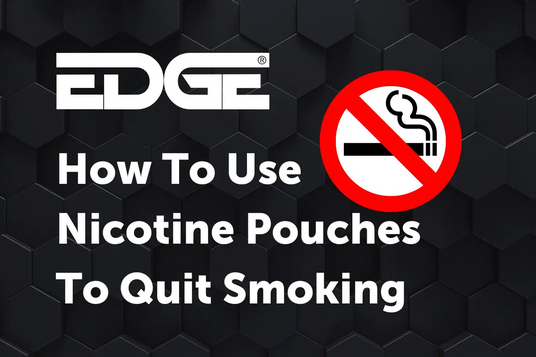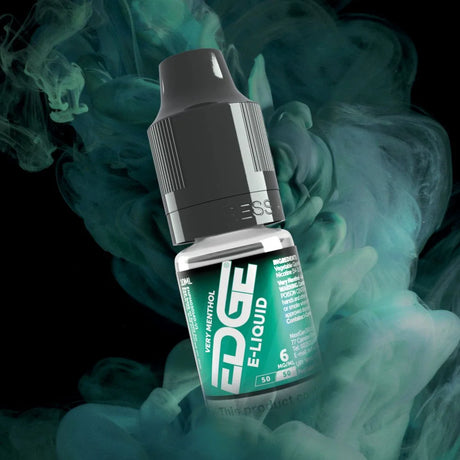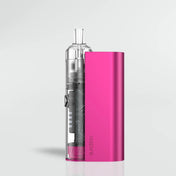Vaping and Health: The Ultimate Guide
The rise of vaping, or e-cigarette use, has fundamentally altered the landscape of nicotine consumption. While some promote it as a route to quit smoking and many perceive it as a less harmful alternative to traditional cigarettes, the health implications of vaping remain a subject of intense debate among health professionals and the public. This comprehensive guide aims to dissect the intricacies of vaping. Examining its operational mechanisms, potential advantages for smokers, associated health risks and its role within smoking cessation strategies.
What is Vaping?
At its core, vaping involves using an electronic cigarette or a vape pen to mimic the sensory experience of smoking without the actual burning of tobacco. These devices operate by heating an e-liquid. A solution typically composed of nicotine (though nicotine-free options exist), a variety of flavourings, propylene glycol, and vegetable glycerin. This heating process transforms the e-liquid into a fine aerosol, commonly known as vapour, which the user then inhales. The market offers a wide array of devices, from discreet, pod-style models favoured for their portability to more advanced box mods that provide greater power and customization options.
If you would like to more about vaping, be sure to take a look at our ultimate guides:

Is Vaping Less Harmful Than Smoking?
The pivotal question of whether vaping is genuinely less harmful than smoking is a central point of ongoing discussion and research. While the scientific consensus continues to evolve, current evidence points to several key distinctions:
-
Less harmful than smoking
Traditional cigarette smoke is a complex mixture containing thousands of chemicals. A significant number of which are established carcinogens and toxins generated through the combustion of tobacco. Vaping, by heating a liquid rather than burning organic material, generally produces significantly fewer of these harmful combustion by-products. This fundamental difference underpins the argument that vaping may represent a less harmful alternative for adult smokers. For instance, research, including findings often cited from comprehensive reviews like those conducted by Cochrane, suggests that e-cigarettes can be more appealing and potentially more effective than traditional Nicotine Replacement Therapies (NRTs) for some individuals seeking to transition away from smoking.
-
Fewer harmful chemicals
While vapour from e-cigarettes is not entirely benign, it generally contains considerably fewer and lower levels of the toxic chemicals produced during the burning of tobacco in traditional smoking cigarettes. Where over 70 substances are known to cause cancer. Vaping heats the e-liquid, thus largely avoiding the production of tar and carbon monoxide, two of the most damaging components of cigarette smoke. However, vaping is not a risk-free activity and those who are under 18, pregnant or breastfeeding or have underlying health conditions should avoid it.
Nicotine vaping
The vast majority of e-liquids contain nicotine. A highly addictive substance that carries health risks. Particularly for adolescents and young adults whose brains are still undergoing critical development. Nicotine exposure during this period can impair cognitive function and negatively impact mood regulation. For a deeper understanding of the physiological effects of this substance, resources such as articles explaining "what nicotine does to your body" provide valuable insights.
Potential Health Effects of Vaping
Despite being frequently presented as a safer alternative to smoking, vaping is associated with its own set of potential health risks, many of which are still being actively investigated and understood:
-
Lung disease
The emergence of EVALI (e-cigarette or vaping use-associated lung injury) in recent years served as a stark reminder of the potential for acute and severe lung injuries linked to vaping. Particularly concerning unregulated or black-market vaping products that may contain substances like THC and vitamin E acetate. While investigations have cleared vaping for the lung disease outbreak in America, the broader impact of vaping on lung health remains a significant concern. Further exploration into the body's ability to recover can be found in discussions about whether your lungs heal from vaping. A fundamental understanding of what vaping does to your lungs is crucial for assessing potential long-term consequences.
-
Cancer
The long-term relationship between vaping and the development of lung cancer, as explored in articles such as "vaping and lung cancer" and "vaping causes cancer", is an area of ongoing research. While vaping does not involve the inhalation of tar and the multitude of carcinogens present in cigarette smoke, the potential for certain harmful chemicals found in e-liquids to contribute to cancer risk over extended periods cannot be definitively ruled out. Similarly, the potential for vaping to increase the risk of throat cancer is also under investigation.
-
Cardiovascular effects
Nicotine, regardless of whether it is delivered through traditional cigarettes or vapes, can exert detrimental effects on the cardiovascular system. It is known to elevate heart rate and blood pressure, cause the constriction of blood vessels, and potentially increase an individual's susceptibility to heart attack and stroke. The specific impact of vaping on high blood pressure is a subject of ongoing research.
-
Respiratory issues
Vaping can cause irritation to the delicate tissues of the lungs and airways. Potentially leading to symptoms such as a tickly cough, as well as wheezing, shortness of breath, and the exacerbation of pre-existing respiratory conditions like asthma. Certain flavourings and additives present in some e-liquids have been implicated in these adverse respiratory effects.
-
Popcorn lung
Diacetyl, a chemical previously utilized in some e-liquid flavourings to impart a buttery taste, has been linked to the development of bronchiolitis obliterans. A severe and irreversible lung condition commonly known as "popcorn lung". While diacetyl has been banned in the UK, understanding its historical use and potential risks remains important.
-
Tonsillitis
There is a possible association between vaping and the inflammation of the tonsils, or tonsillitis. While definitive evidence establishing a direct causal link may still be emerging, the irritant properties of vapour could potentially contribute to inflammation in the throat area.

Vaping and Specific Health Concerns
Beyond the general health risks associated with vaping, several specific health concerns have been raised and are being investigated:
-
Weight loss
The notion that vaping can effectively help you lose weight is largely unfounded. While nicotine can have some metabolic effects, it is neither a safe nor a recommended strategy for weight management. If you would like to know if vapes contain calories, you may find our blog post on the topic interesting.
-
Fertility
There are concerns regarding the potential negative effects of vaping on both male and female fertility. Nicotine and other chemicals found in e-cigarettes have the potential to negatively impact reproductive health. Our article on whether vaping affects fertility provides more detailed information on this subject.
-
Breast Development
The relationship between vaping and breast development is a specific area of inquiry that requires careful consideration of the existing scientific literature to understand any potential links.
-
Skin
The impact of vaping on your skin is another topic that is still being explored. Exposure to the chemicals found in vapour could potentially lead to skin irritation or other dermatological issues.
-
Oral Health
Vaping can contribute to issues such as dry mouth, gum irritation, and potentially increase the susceptibility to oral infections. The phenomenon of "vaper's tongue", where users experience a temporary loss or alteration of taste, is a related concern.
-
Exercise
Whether you can vape and work out is relevant for those who engage in sports or regular exercise. Vaping can negatively affect lung function, potentially impairing athletic performance.
-
Swallowing Vape Juice
The accidental ingestion of e-liquid, particularly by children, poses a significant risk due to the high concentration of nicotine and other toxic chemicals. Information on "what happens if you swallow vape juice" underscores the importance of safe storage and handling of vaping products.
Vaping as a Smoking Cessation Tool

A primary motivation for many adults to switch to e-cigarettes is as a means to help you quit smoking:
- Help you quit smoking: For some individuals who smoke cigarettes, transitioning to vaping can represent a step on the path towards complete cessation. The availability of e-liquids with varying nicotine strengths allows users to gradually reduce their nicotine dependence.
- E-cigarettes for smoking cessation: Certain studies, including research suggesting that vaping may be more effective than traditional Nicotine Replacement Therapies (NRTs) for some smokers, indicate the potential of e-cigarette use in smoking cessation. It is crucial to approach quitting with a well-considered strategy. Ideally developed in consultation with a healthcare professional who can provide tailored guidance and support.
- Smoking to vaping: For those making the transition from smoking tobacco to vaping, the ultimate goal should be the complete cessation of all tobacco and nicotine products. Simply substituting one habit for another may not eliminate all health risks. Awareness of the potential to go back to smoking if vaping is not managed effectively is also important. Support from resources such as a local stop smoking service can be invaluable.
The Path to a Smoke-Free Future: Beyond Vaping

While vaping is considered by some as a way to quit smoking, it is essential to recognize that numerous other evidence-based methods exist to help you stop smoking. These include traditional Nicotine Replacement Therapies (patches or gum), prescription medications, and behavioural support offered by services like a local stop smoking service.
There are also newer methods, such as Nicotine Pouches. Like e-liquids, they come in a range of nicotine strengths, allowing users to gradually reduce their intake. If you're not sure what nicotine pouches are, you can learn more by checking out our Ultimate Guide.
For individuals aiming to "quit smoking" or "stop vaping", exploring these proven strategies, often in conjunction with advice from healthcare professionals, offers a direct route to a completely smoke-free and vape-free life.
EDGE Nicotine Pouches
View allExpert Perspectives: What the Health Authorities Say
Leading health experts and reputable organizations, such as Johns Hopkins Medicine and those involved in cancer research, are actively engaged in investigating the short-term and long-term health implications of vaping. While there is a general consensus that vaping is likely less harmful than smoking, these experts also consistently emphasize that it is not without risks and should not be used by non-smokers, particularly young people. The overarching public health objective remains the achievement of better health, through the complete cessation of all tobacco and nicotine-containing products.
Government and NHS Initiatives: Encouraging the Switch to Vaping
The UK government and the National Health Service (NHS) have increasingly acknowledged the potential role of vaping in tobacco harm reduction and smoking cessation. This recognition has led to the implementation of initiatives aimed at encouraging smokers to switch to vaping as a means of quitting smoking.
A key example of this is the "Swap to Stop" scheme. A government-backed program that aims to accelerate the decline in smoking rates. Through "Swap to Stop," adult smokers are offered a pathway to transition away from traditional cigarettes by providing them with free vape starter kits and accompanying support. Local authorities play a crucial role in the scheme's implementation. Designing programs that address the specific needs of their communities.
In addition to government-led programs, the NHS has also forged partnerships with vape retailers to integrate vaping into mainstream smoking cessation support. Studies have indicated that combining vaping with professional guidance can significantly improve quit rates among smokers. To leverage this potential, some NHS Stop Smoking Services collaborate with vape shops to provide clients with access to vaping devices, e-liquids, and expert advice. This collaborative approach aims to equip smokers with the tools and knowledge necessary to make a successful switch to vaping. Thereby reducing their exposure to the far greater harms of continued smoking.
Other Considerations
Navigating the landscape of vaping involves several additional important factors:
Obtaining vaping products from a reputable source is of utmost importance. Counterfeit or poorly manufactured vape devices and e-liquids may contain undisclosed and potentially toxic chemicals. Posing unnecessary risks to users.
The UK has strict minimum safety standards. However, it remains crucial for consumers to be careful and purchase from trusted retailers.
Exposure to second-hand vapour, while generally believed to contain lower levels of harmful substances compared to second-hand cigarette smoke, is not entirely risk-free. Particularly for vulnerable individuals such as children and people with health conditions like asthma.
It is important to address and debunk common misunderstandings about vaping. Articles such as "6 vaping myths debunked" and "vaping demystified" help to clarify misinformation surrounding e-cigarettes and vaping.
Regulatory bodies, such as the MHRA in the UK and similar organizations globally, play a crucial role in overseeing the manufacturing and marketing of vaping products. Although, regulations continue to evolve as the science progresses.
The permissibility of vaping in specific contexts, such as professional sports, highlights the ongoing evolution of societal norms and regulations surrounding the use of these products.
The totality of the evidence so far, shows that vaping paints a complex picture. While vaping is generally considered less harmful than smoking, it is not without its own inherent risks. It is strongly discouraged for non-smokers and young people.
Conclusion
Vaping has emerged as a significant alternative in the landscape of nicotine use. Offering adult smokers a pathway, that evidence suggests, is less harmful than smoking by eliminating combustion. While not entirely risk-free, it presents an opportunity to reduce exposure to the numerous toxic chemicals associated with traditional cigarettes for those committed to switching.
For individuals seeking to break free from smoking tobacco, vaping can serve as a potential tool. Especially when integrated into a comprehensive cessation plan supported by healthcare professionals and resources like a stop smoking service.
By choosing vaping products from a reputable source that adheres to UK safety and quality regulations, adult users can make more informed choices on their journey away from smoking.
Ultimately, while the ideal outcome remains complete freedom from both smoking and nicotine vaping, for many adult smokers, transitioning to vaping represents a positive step towards reducing harm and improving their overall well-being.
EDGE Vaping: A Commitment to Health and Harm Reduction
At EDGE Vaping, we take the health and well-being of our customers incredibly seriously. Our commitment extends beyond simply providing vaping products; it's rooted in a genuine desire to offer a less harmful alternative to traditional smoking and to support individuals on their journey to a smoke-free life. Our e-liquids are manufactured to be fully compliant with the Tobacco Products Directive (TPD) regulations in the UK, ensuring stringent standards of safety and quality for our users. This adherence to rigorous guidelines reflects our dedication to providing products that adult smokers can trust as they consider switching.
The very foundation of EDGE Vaping stems from a personal mission. Our founder was driven by the desire to help his own mother quit cigarettes, understanding firsthand the challenges and the importance of finding effective alternatives. This personal experience continues to shape our ethos, placing the health and well-being of smokers at the forefront of our operations.
Furthermore, EDGE Vaping actively partners with local stop smoking services successfully across the UK. We believe in a collaborative approach to help you stop smoking, recognizing that vaping can be a valuable tool within a broader support system. By working alongside established cessation services, we aim to provide individuals with comprehensive resources and guidance to maximize their chances of successfully quitting smoking for good. Our commitment is to not only offer quality vaping products from a reputable source but also to actively contribute to a healthier, smoke-free future for our communities.




































